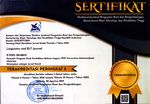Analysis of Derivation and Inflection Affixation in an Article with the Title “How Wildfires are Changing the Face of the Mediterranean Landscape”
Abstract
This study examines derivational and inflectional affixation in the article “How Wildfires Are Changing the Face of Mediterranean Landscapes.” Morphology, a field of linguistics, studies how words are formed and how morphemes create new meanings and grammatical structures. This study identifies and analyzes the types and patterns of affixes in the article and their role in meaning and grammar. By using qualitative methods, 53 derivational affixes and 76 inflectional affixes were found. Derivational affixes, such as prefixes (re-, un-) and suffixes (-ion, -ly), often change the word class, thus expanding the vocabulary. Inflectional affixes, such as -s, -ed and -ing, provide grammatical details without changing the core meaning of the word. Inflectional affixes appear more frequently in articles, showing their importance in grammar, while derivational affixes add depth and variety. This study highlights how affixation helps convey scientific and narrative information effectively. This research contributes to linguistic research and offers insights for writers and editors in creating clear and engaging content.
Keywords
Linguistics
Full Text:
PDFDOI: https://doi.org/10.31764/leltj.v12i2.28175
Refbacks
- There are currently no refbacks.
Copyright (c) 2024 Salsabila Wardhani

This work is licensed under a Creative Commons Attribution-ShareAlike 4.0 International License.
_____________________________________________________
Linguistics and ELT Journal
p-ISSN 2339-2940 | e-ISSN 2614-8633

LELTJ is licensed under a Creative Commons Attribution-ShareAlike 4.0 International License.
_____________________________________________________
LELTJ is abstracting & indexing in the following databases:
_____________________________________________________
LELTJ Editorial Office:













